Amber: dry honey tears
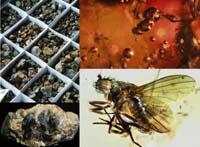
Like coal and oil, amber is of biological origin. It comes from the resin of the trees. In case of injury, conifers secrete resin. Close to the skin, the resin is found in the resin tubes. Although it is liquid until it flows, it solidifies in contact with the atmosphere. It is aromatic and lingirosa. And anyone on the outside of the stem is trapped by a viscous river, whether insects and fungi, leaves, seeds and pollen grains. In addition, the processes are perpetuated: if during the runoff of the resin a group of ants was cutting and transporting leaves, that is what is seen in amber.
This is due to the fossilization of the resin. Over time, the resin is oxidized and amber is formed by polymerization of the organic components. But for this to happen, millions of years are needed. Most of the amber that has been found is from the time of the Tertiary and the Quaternary, that is, from 66 million years, but there are older ones. In addition, it requires special temperature and pressure conditions for its generation and maintenance. And this is one of the most surprising characteristics of the deposits that exist in Alava: since its foundation, more than 110 million years ago, geological events have made it last until today, have been spectacular and have maintained its optimal state.
Anbara in Alava
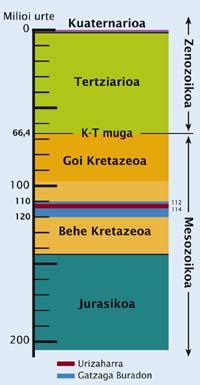
In Álava there are two deposits and they are the only ones that exist in the Basque Country. Both are located in the Sierra de Cantabria, in the area of Toloño. One in Peñacerrada-Urizaharra and another in Salinillas de Buradón. The first of them was found almost by chance in 1995.
In the early 1990s, the opportunity to learn gemology emerged in Vitoria-Gasteiz. They learn, among other things, how gems are clicked and worked. From this school came Rafael López del Valle, who became a gemologist. In 1995, while treating several amber fragments found in the Sierra de Cantabria, he found an insect inside. Aware of its importance, he went to the Natural Museum of Alava, located in Vitoria-Gasteiz. That was the beginning of the Alava deposits, starting point of numerous studies.
Currently, López del Valle is one of the experts who works in the study of the site that manages the museum. The director of the Museum, Jesús Alonso, directs the investigations: "In science there are many things by chance, but it is true that the lottery can only be for those who buy the tickets."
After finding that first deposit in Peñacerrada-Urizaharra, they start looking for others in the area. Thus they found the second, in Salinillas de Buradón, in Labastida. This second one also hides many surprises: It is more fruitful than that of Peñacerrada-Urizaharra, since 75 g of rock are amber - 10 of 1000 kg in Peñacerrada-Urizaharra -. However, the site of Salinillas de Buradón is in the first steps of the investigation and, although so far many amber inclusions have been found (anything that has been trapped in amber), it is believed that it contains more surprises.
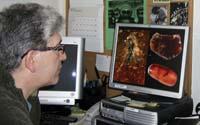 Jesús Alonso is director of the Natural Museum of Alava and responsible for amber deposits. The image shows a photo of some amber inclusions. A. A. TxintxurretaSurprises and surprises Surprises
Jesús Alonso is director of the Natural Museum of Alava and responsible for amber deposits. The image shows a photo of some amber inclusions. A. A. TxintxurretaSurprises and surprises Surprises

The insect discovered by López del Valle was only the first of all the surprises found in Alava; since then more flies, butterflies, grasshoppers have been found... Only 13 orders of different insects have appeared in Peñacerrada-Urizaharra. Mites, spiders, crustaceans, molluscs and plants, fungi and bacteria also appear. Non-fossilized organic matter has also been found. In total, more than two thousand biological inclusions have been found in Alava amber to date. Also bubbles full of air and liquid.
They have found many and varied inclusions and the quality of them is excellent, they are offering a lot of information. "Before Peñacerrada-Urizaharra, they thought that the flies appeared in the Tertiary, since the rest of the oldest known flies were of that time. And that has happened with more groups, the groups that we were modern have appeared in amber", explains Alonso. In the evolutionary history of many of the living beings found in Peñacerrada-Urizaharra, for the time being, no remains have been found older than these. In addition, fossils of living beings have been found that today have no representation, which could not cross the limit of the Lower and Higher Cretaceous, which became extinct.
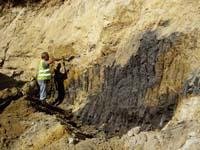
The one found in the fields of Alava is, therefore, singular: "The representatives of very old insect groups appear mixed with representatives of modern groups. In these deposits appears this limitation. For example, butterflies have no spirits because they did not absorb anything; they have jaws because they would be carnivorous."
The Alava deposits belong to the Aptiense period of the Lower Cretaceous, about 114 million years ago; they are the most abundant deposits of the lower Cretaceous of the world. It was a confusing time, since at the end of the Jurassic and during the Cretaceous there were profound changes in plant communities. The most significant change was probably the appearance of plants with flowers. His success was enormous, to the point of completely altering the landscape of the planet. It went from being a landscape dominated by ferns and conifers to being full of flowers. This caused changes in the rest of life, and animals, for example, had to adapt to the new situation.
The world of micro
Amber reflects the changes that suffered both Alava from the time and its surroundings in the subsequent years. The resin, more than the big animals, catches the little ones and the amber alavés is full of animals. The things mentioned so far are seen at first glance, but the amber also kept more surprises than had not been seen so far.
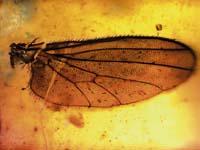
Jesus Alonso has entrusted us emotionally that they have been pioneers in the study of amber. "We knew the work carried out by a group of Spaniards in Antarctica. They studied the unicellular ones inside the rock. We thought of using amber techniques they used, although we did not know how amber responded." They tested electron microscopy and discovered an unknown world, "so we enter the world of micro."
They discovered unicellular organisms, such as protozoa, as well as pluricellular, such as fungi. Innovative techniques revealed communities of microorganisms but also symbiosis among them. In addition, with these methods they could also analyze other inclusions, structures that were not derived from living beings, and all of them offered them a new information that until now had never been investigated in amber.
The methodology is always the same: when they find something in the site, they bring it to the laboratory, clean it and look at it from the microscope. They do not throw anything, since they also analyze the rejected in cleaning. If they find an inclusion, they send it to experts from all over the world; if they find an mite, for example, someone expert in mites. It will help to determine the species to which it belongs. Jesús Alonso acknowledges that finding these experts is an arduous task, among other things because there are few specialized paleontologists; "several theses have been addressed to the study of Alava amber and from there specialists will leave".
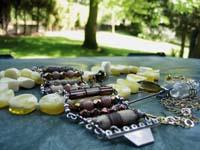
Alava, 114 million years ago
Along with amber they have found other fossils in very good condition; the carbonized feathers, the leaves of the plants, the pollen and the wooden fossils, among others, will help to understand the ecosystems and climate of the time. The information obtained from the findings in the Ambar, offered by the structure of the Ambar itself and the study of the findings in the site, in addition to amber, have allowed to know the environment in which it was located.
In the lower Cretaceous, Euskal Herria was under water. To go to the beach we would have to go south of Álava, near the Sierra de Cantabria, where the coast was. In addition, on the way, we would meet a mangrove, near a river, not far from the beach. If we made a canyon, we could know the corners of the manglado and its inhabitants. To make the canyon we would have to enter the forest near the mangroves; we should pass between the giant ferns, say goodbye to some hedgehog, chase away insects and spiders, and finally, when we meet some preceptor or magnoli, we could make a canoe with its wood.
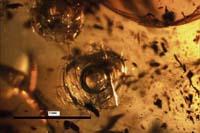
All this, of course, on the beach, but there were no human beings or other primates. The dinosaurs were the owners. At that time it was believed that the first birds and the first plants with flowers appeared, which meant a great change in the environment.
The world was active, both biological and geologically. As has already been indicated, most of Alava was under water and the coastal border was in the current Toloño-Cantabria mountain range. There the rivers formed deltas and estuaries. And in them, the vegetable remains from the rivers that accumulated in their sediments of sand and clays; the forests left in the water abundant branches, trunks and leaves, as well as a resin adhered to the residues.
Sometimes, suddenly, large avenues of water are precipitated, covering the sediments of everything they brought with them. The sediments accumulated in the deltas and estuaries were sealed like this. And so they have been to this day. When the Iberian plate collided with Europe, it doubled and uncovered these sediments, which were subsequently discovered by Rafael López del Valle.
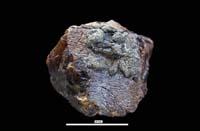
López del Valle himself, Alonso, as director, and a large group of experts, are working on fire to uncover what hides the Alava amber. Of the 22 deposits existing in the world, only 11 are before the destruction of the dinosaurs, but only 6 of them are more than 112 million years old, and of the 6 only 2 are important for the number of inclusions found: one is in Lebanon and the other in Alava (although those of Alava are two deposits, they are considered as an account because they are in the same area). Therefore, they are aware of the importance of their work in the Natural Sciences Museum of Vitoria-Gasteiz.
The information they have released so far is not scarce, but they have a lot of work. A good knowledge of the ecosystems reflected in the Alava fields will allow us to better understand the ancient life of the Earth. The Alavés amber has not yet said everything it has to say.
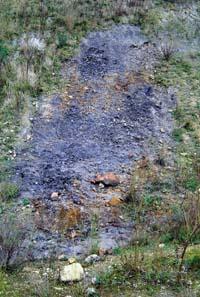
Buletina
Bidali zure helbide elektronikoa eta jaso asteroko buletina zure sarrera-ontzian











